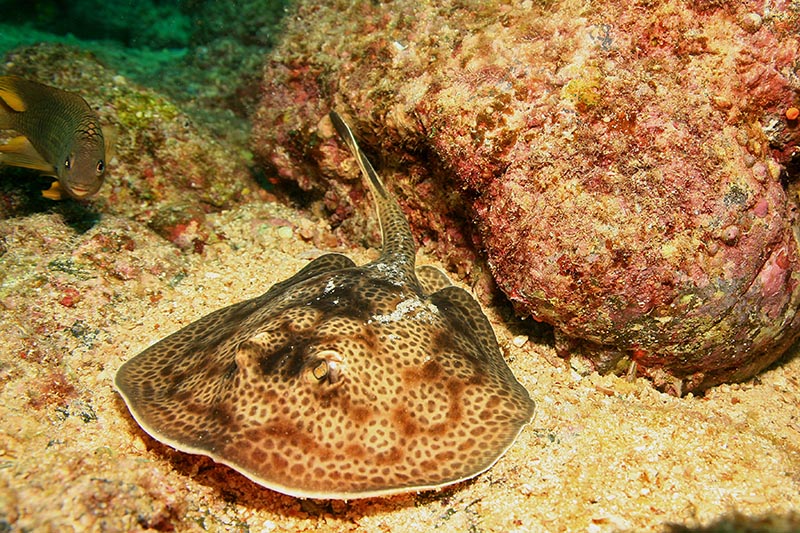Round Rays Rays
The basics about Round Rays
Round Rays (Urobatis halleri) are member of the stingray family, and the most plentiful of the rays found in California. These fish can be found from Northern California to Baja and are numerous throughout their range. They feed on or near the bottom and like other rays, they give live birth.. These fish are easily identifiable by their wide “disk-like” heads, sharp stinger and round tail fin. These are a smaller species, only reaching about 2 feet in length, and for the most part they remain close to the bottom and are slow moving.
Physical Characterestics
As its common name implies, this ray’s smooth body or disc is nearly round. It does not have a dorsal fin. Its sturdy tail is less than half the length of its body and ends in a true caudal fin, unlike the thin whip-like tails of other stingrays that usually lack a caudal fin. The eyes and spiracles are on top of the head and the mouth, nostrils, and gill slits are on the ventral side. The sting is located on top of the tail about half way back from the base of the tail. An average sized ray usually has a spine that is 2.5-3.8 cm (1-1.5 in) in length. Round rays vary in color from tan to brown to gray and from plain to spotted or mottled with varying pattern shades giving them a dappled appearance. The dappling is diffuse in most round rays, but in some, the patterns are well defined. The underside is a solid whitish or light yellow color.
Where Round Rays Are Found
Round rays prefer sandy or muddy bottoms, but are occasionally found in rocky reef areas. They most commonly inhabit water depths from intertidal to less than 15 m (50 ft) in depth, but may also be found in water as deep as 91 m (300 ft). It is not unusual to find them in greater numbers at estuary mouths and shallow bays during breeding and pupping times of the year (April to September). Sloughs and beaches are other favorite areas.
Cool Facts About Round Rays- and yes just two facts
- The venom apparatus of stingrays is called the sting. It consists of the spine, its sheath, and venom glands. The spine is the rigid dentin surface of the sting. It is covered with a thin sheath of skin. The barbs are the backward facing serrations along the sides of the spine.
- Round rays are preyed on by northern elephant seals and larger fishes such as giant sea bass and sharks, especially leopard sharks. When fishing for bottom fish, recreational fishers commonly catch rays. They usually release them, but some fishers kill the ray before attempting to remove their fishing gear. They are infrequently used as food.
Woo-Hoo you reached the end! let's explore the site some more shall we?


